Dear All Steels Customers,
It was certainly a difficult second quarter for all steel
producers, and our own rolling mills took their fair share of lockdown time as
demand sharply fell away. Thankfully both Bromford Iron and Special Steel
Sections have been back in business since the start of July and demand
continues to slowly improve. On the trading side of our business many
customers are asking for our view on the market as a multi-product trader, so
here it is based on the usual fundamental hard facts that normally drive steel
prices.
When I looked back at my last circulation I mailed out in
mid-March I was pleased to see that I logically opened my message with the
following statement:
“Everything said below has to be tempered with a belief
that demand will slow down and it could even fall off a cliff edge if forced
self-isolation and social distancing measures continue for most of 2020”.
Understandably the same health warning applies again, but
hopefully we are on the road to recovery in most respects.
My opening section below really just addresses the raw
material cost fundamentals on steelmaking. As you can see from the
selection of graphs everything is pointing towards a necessity for steel prices
to increase, especially when you combine this with the knowledge that virtually
all steelmakers are losing money. Evidence would therefore suggest we
must be hitting a bounce back point.
Iron Ore
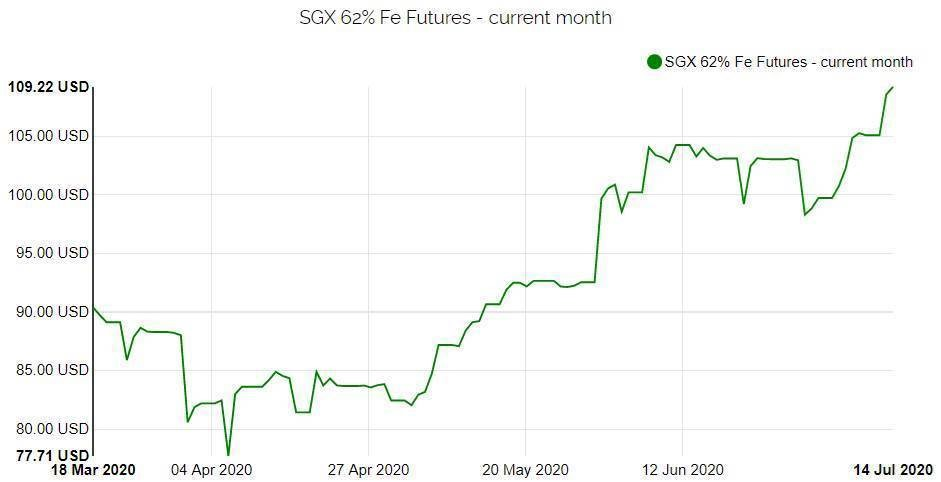
Mining commodity prices fell nowhere near the levels
anticipated, primarily because of China’s quick economic recovery. Moreover,
Chinese demand has continued to strengthen at a time when Brazilian mines have
almost ground to halt as a result of large Covid-19 outbreaks amongst the
mining communities.
Brazilian output will eventually return but in the short to
mid-term the maths is simple to do.
A $30pt iron ore cost increase is just not possible for a
steel producer to absorb so BOS route steel prices must rise.
1.7t of iron ore is used to make
a tonne of steel.
Coking Coal
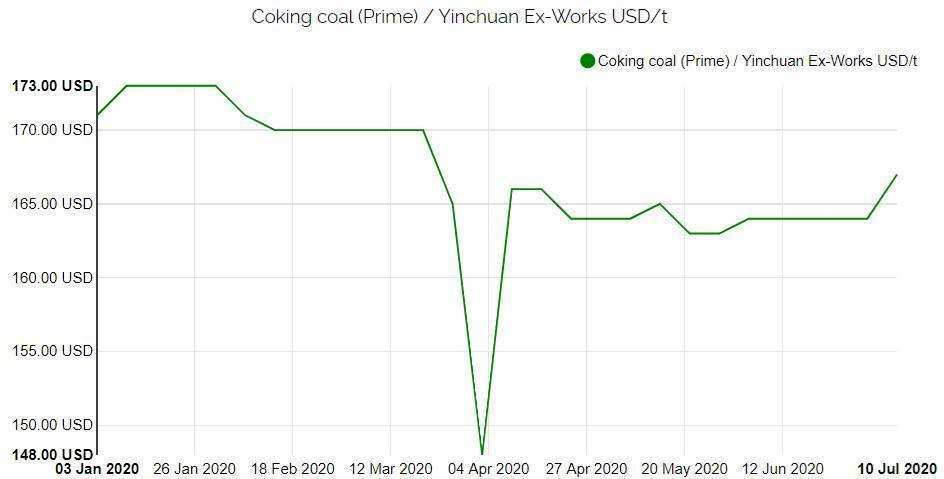
As more metallurgical coking coal production has been
concentrated in Australia, prices have been more influenced by extreme weather
over the last decade rather than supply and demand. The onslaught of
Covid19 however did take its toll on coking coal prices, but the dip was
clearly short lived as the graph shows.
Evidently coking coal prices are now within $2p/t of
pre-crisis levels. There is also a lot of new speculation pointing
towards rising prices off the back of many mining giants’ decisions to
significantly cut capacity.
0.7t of coking coal is used to
make a tonne of steel.
Scrap
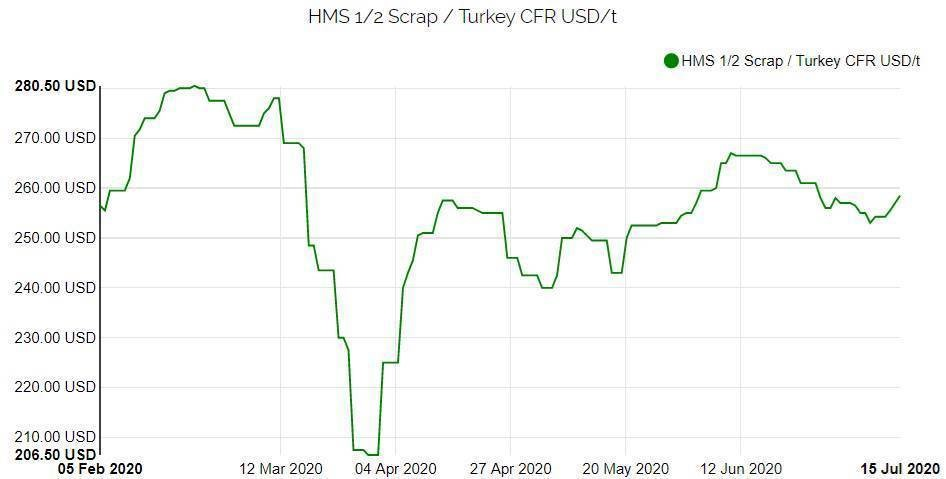
Turkish imported scrap prices are always the most reactive
to supply and demand and general world events. Clearly, we are seeing a
common theme with scrap prices having hit rock bottom in early April followed
by a sharp recovery.
Against expectations of a July scrap price fall the opposite
now seems to be the reality.
The same outcome is also being mirrored in both the UK and
mainland Europe. Scrap route melters are therefore facing equal cost
pressures to that of the BOS route steelmakers!
1.1t of scrap is used to make a
tonne of steel.
Exchange Rates
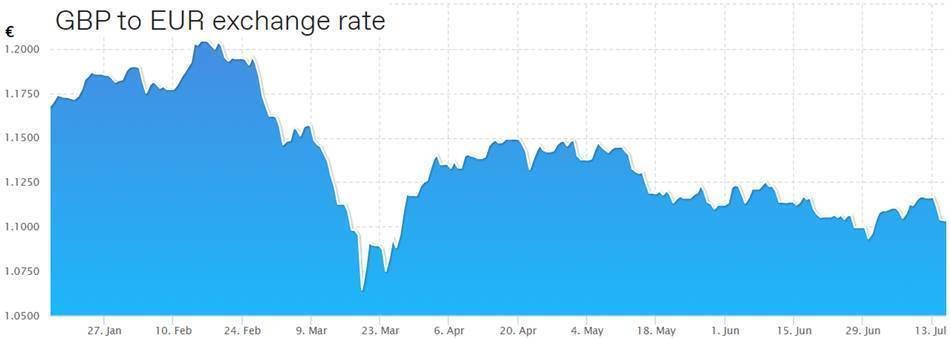
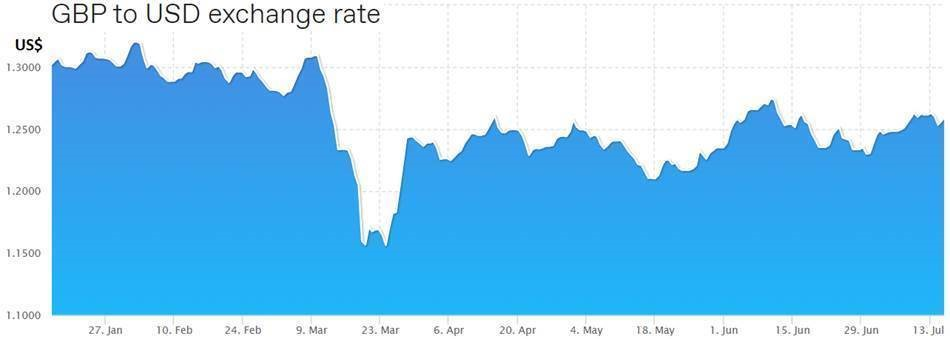
As Covid-19 took a stranglehold in the UK at the end of
March the £ took a thumping and lost circa 12% of its value.
Again, the recovery here was relatively quick, but it still
remains much weaker against both the Euro and the US$ than its position at the
start of the year.
Whether it is raw materials for UK steelmakers or imported
finished steel this devaluation is significant. Since the start of the
year the currency effect alone is adding circa £35-£40 per tonne to steel
imported from mainland Europe.
All shipping and road transport for deliveries to the UK are
also Euro or US$ based, so this is also adding additional costs to imported
prices.
Oil Prices
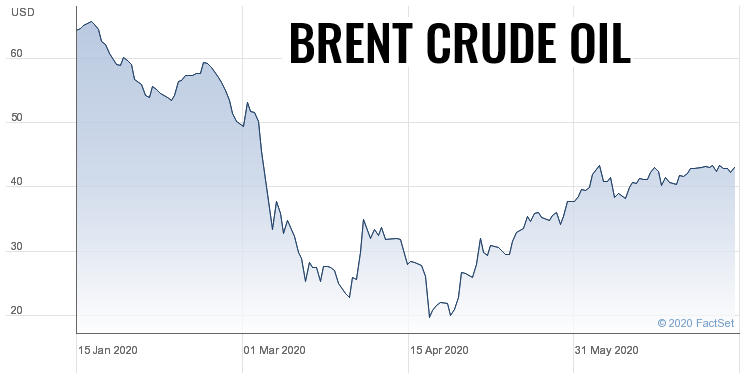
A notorious rule of thumb is to use oil price trends as a
barometer for steel price movements.
Despite our move to green steel oil generally still has a
bearing on steelmaking energy costs, so this again has an impact on prices.
In general, however oil prices are usually just a reflection
of the economic world and without surprise this is pointing to a position of
improvement.
PRODUCT REVIEWS
The pricing dynamics by product are quite varied, so in this
second section I have tried to give All Steels’ true view on how we see trade.
Merchant Bar
Domestic over capacity for today’s UK market remains a
constant problem and the imbalance on supply and demand has already taken its
toll once again on merchant bar prices. As we have all seen in the media
the mills have been pushing hard for Government loan assistance and some
support has been granted, but these are loans at a cost that have to be paid
back. On a positive note, I am sure the weak value of sterling will be
assisting exports, but current domestic prices cannot be sustainable for the
mills.
At the outbreak of Covid-19 most of the mills took the brunt
of the costs as they were left with the financing of stock as many
stockholders/consumers simply closed. The mills naturally cut back
capacity and discounted prices to encourage some sales, but the balance now
seems to have been addressed. Stockholders have called in the mills’ aged
stocks, mills and traders dock stocks have been heavily depleted, and we have
finally reached the mills’ extended summer shutdown periods.
Everything therefore suggests a tightening in supply and a
much busier period on their return from summer breaks. Given all the
other steelmaking cost factors referenced above price increases must be on the
mills’ agendas.
Hollow Sections
As EU Safeguard quotas became exhausted mid-February it was
almost guaranteed that hollow section investors were going to get a very nice
margin return in Q2. Once again this was another one of those lessons
that nothing is guaranteed in the steel industry.
Demand fell off a cliff and Turkish prices collapsed, and
the new July Safeguard quota window quickly opened. As buyers have
understandably returned in a cautious mode there has been a reluctance to
forward order. Mill stocks and dock stocks have suddenly become heavily
depleted and shortages are now evident on many popular sizes. This
coincides with Tata UK announcing a £50 per tonne price increase on HRC that
logically must wash through into hollow section prices. From All Steels’
experiences we are also seeing similar changes in our Turkish buying prices
especially when you factor in the adverse foreign exchange.
Hollow sections has always been one of those products of
feast or famine with consequential dramatic price swings, and at present it
looks like we are entering a window of famine!
Structural Sections
The Jingye Group’s acquisition of British Steel literally
happened as UK manufacturing slammed on the brakes and went into
lockdown. Miraculously British Steel Sections has managed to plough on
regardless and appear to have spanned the world to find the necessary sales to
keep their mills rolling. This was clearly a set out intent of Jingye to
maximise plant utilisation as a first priority to improve competitiveness, and
I am sure they will have recovered UK market share. Even with such efficiency gains however the
rising costs of steelmaking ingredients have surely reached a point where they
can no longer be ignored.
It also has to be recognised that “The Get Britain Building
Campaign” appears to be a top priority Government initiative, so this has to
bode well for structural steel demand. The coming together of these
developments would therefore appear to be good timing for a recovery in steel
prices, and British Steel has already formally announced a €30 per tonne price
increase to its European customers. An increase on structural section
prices for the UK therefore has to be just around the corner!
These are only All Steels’ views, which we have generally
been asked to share. However, we hope this provides you with some useful
guidance on how things are most likely to unfold in what will hopefully prove
to be a time of recovery for all concerned in our industry.
Keep staying safe!